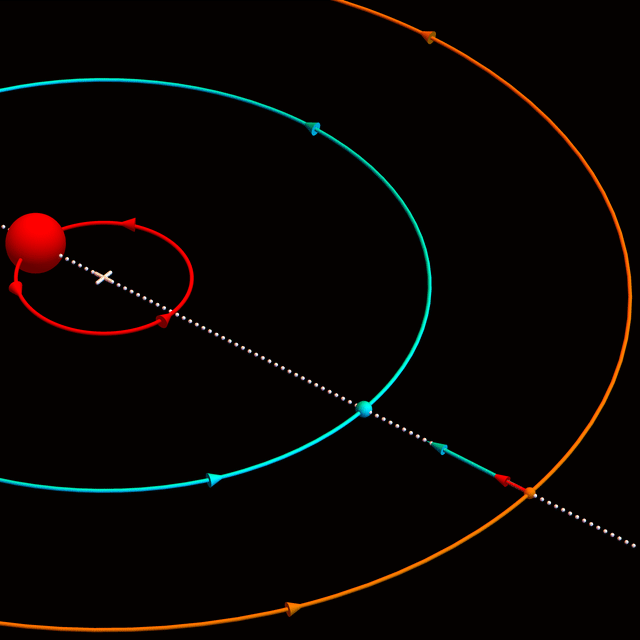The Webb telescope has fully deployed and arrived at its halo orbit about the second Earth-Sun Lagrange point. But how can it orbit an empty point in space?
In the accompanying animated sequence of inertial space diagrams, a star (red) and planet (cyan) orbit their common center of mass (cross). The inward force to pull a moving mass (orange) into a circular orbit of fixed period increases proportionally with distance, but at the distance of L_2, the combined gravitational pulls of the star and planet are sufficient. Shifting the mass upward increases its distances from the star and planet, which decreases their pull. Shifting the mass inward compensates for this radially (orange), but perpendicularly a force component (yellow) now pulls the moving mass into a circle about L_2 in a reference frame rotating with the planet, and the mass bobs up and down sinusoidally (solid white) along its orbit in an inertial frame fixed to the distant stars.

Star (red) and planet (cyan) gravitationally pull a mass (orange) into a halo orbit (yellow). You may need to click to see the animated sequence.

Thanks, Mark! I enjoy reading your posts as well.